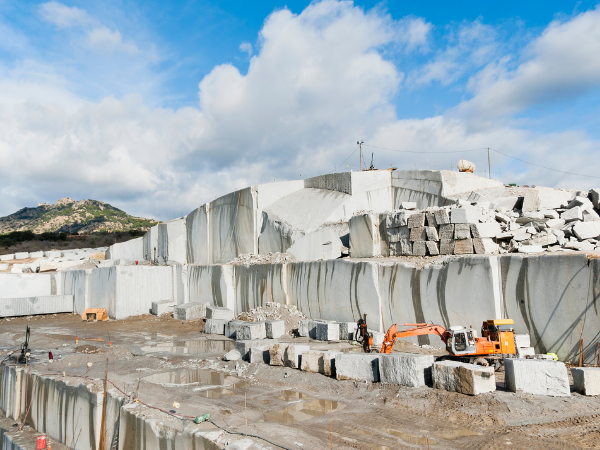
Often believed to be the literal cornerstone of society, granite stone has a rich and diverse history. Ancient Egyptians carved hieroglyphs in granite, and Moses purportedly used granite when carving the Ten Commandments. Granite is also the material integral to Mount Rushmore, but it’s a long way from presidential look-alikes to granite countertops.
Both popular and prevalent, granite countertops feature distinctive, often mottled surfaces. And they’re easily recognizable to even the most uninformed eye. But where does granite come from, and how does it go from rock to granite countertop?
Composition
Granite is composed of a range of minerals and crystals, including quartz, albite feldspars, and orthoclase. They combine over time to create the signature swirls and granular appearance. The word granite itself derives from the Latin granum, also known as “grain.”
Origins of Granite
Granite is an igneous rock. It forms when magma or lava deep within the earth’s core solidifies and cools. This takes considerable time and even more pressure. Consequently, the granite in granite countertops is one of the most durable stones, registering at a 6–7 on the Mohs’ scale of hardness. By comparison, diamonds come in at a 10. Little wonder granite makes up 95 percent of the earth’s crust.
This makes extracting it from quarries no easy undertaking, and in the past, granite countertops were only available to the wealthy and well-to-do. Time moves on, though, and the days of rolling granite on logs to move it from point A to point B are long gone. Moving granite can be a simple process in our modern world.
Extracting and Refining Granite
Although the magma may derive from the earth’s mantle or even core, granite is extracted much closer to the earth’s surface.
The granite favored for granite countertops is typically cut from shallow quarries. Miners use drills to cut into the rock’s surface in the desired block’s shape and size. This will go on to become a granite countertop. Before that can happen, though, they must separate the granite from the rest of the bedrock.
Miners then place explosives in the holes cut into the granite. This is done with extreme caution since too much force risks breaking the granite.
Once granite is extracted, it is then polished to bring out the naturally occurring colors and patterns in the rock. To give granite countertops their unique shine, the polishing process machines have diamond polishing pads. After all, it takes something of similar, if not stronger, durability to grind down granite and refine the surface to the smooth, distinct granite look on kitchen and bathroom countertops everywhere.
Each layer of polish further refines the prospective surface of your granite countertop. The process is similar to that of polishing wood but is more intensive and lasts for longer.
Granite for the Modern Day
Now more than ever, granite is readily available. Modern technology not only makes transportation considerably easier than it was for the Egyptians and their log-rolling system, but it has increased the variety of granite on offer as imports from all over the world increase.
Accordingly, the average cost of granite countertops is becoming more affordable and comes in various colors and textures. Bath and kitchen renovations can be simple and easy, now more than ever.
Cameo Countertops can help bring granite countertops to your home from kitchens to bathrooms, adding a touch of historical grandeur to everyday living. Contact us today to help bring your vision to life.
